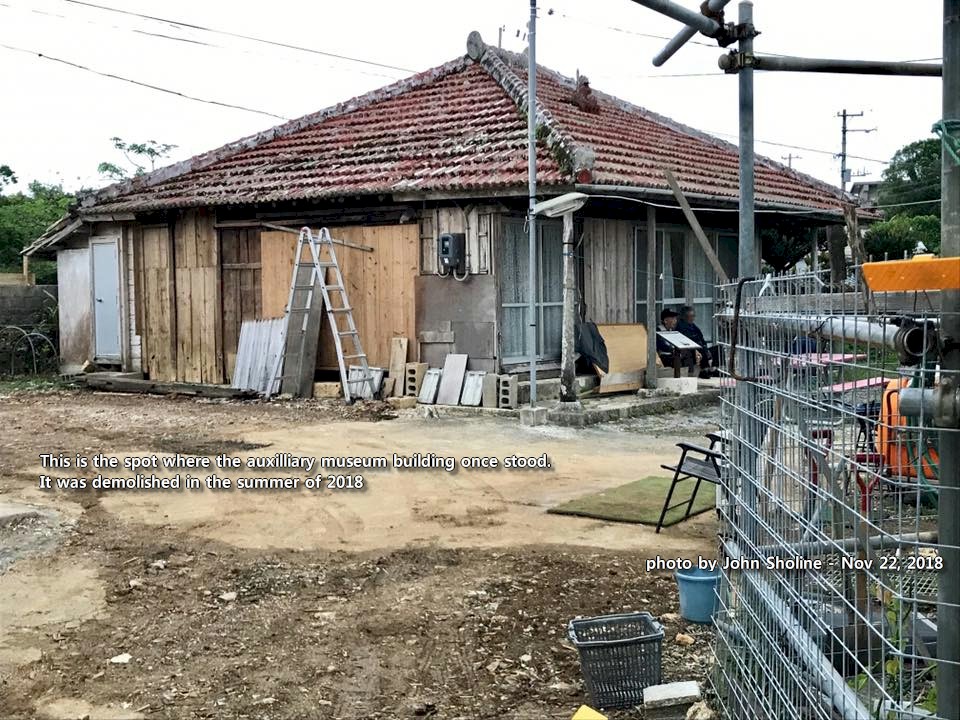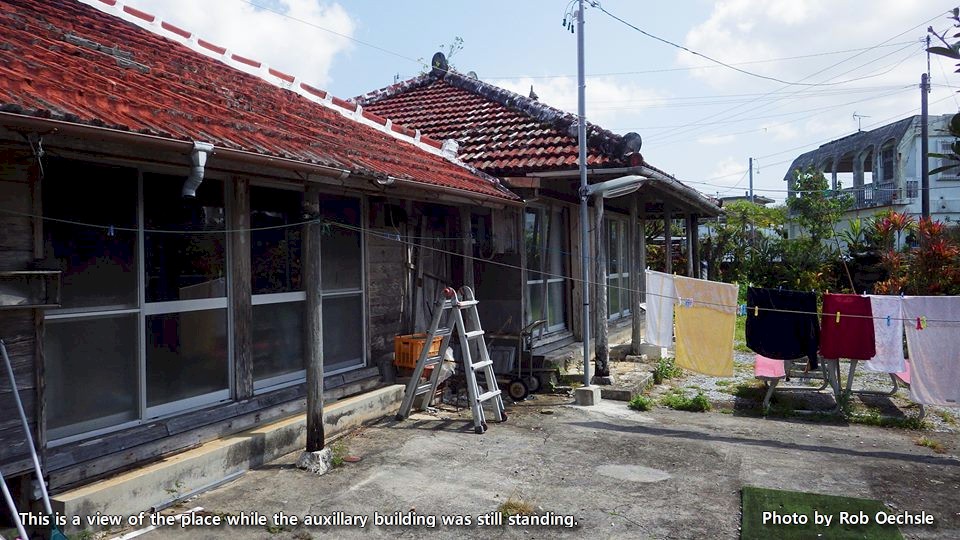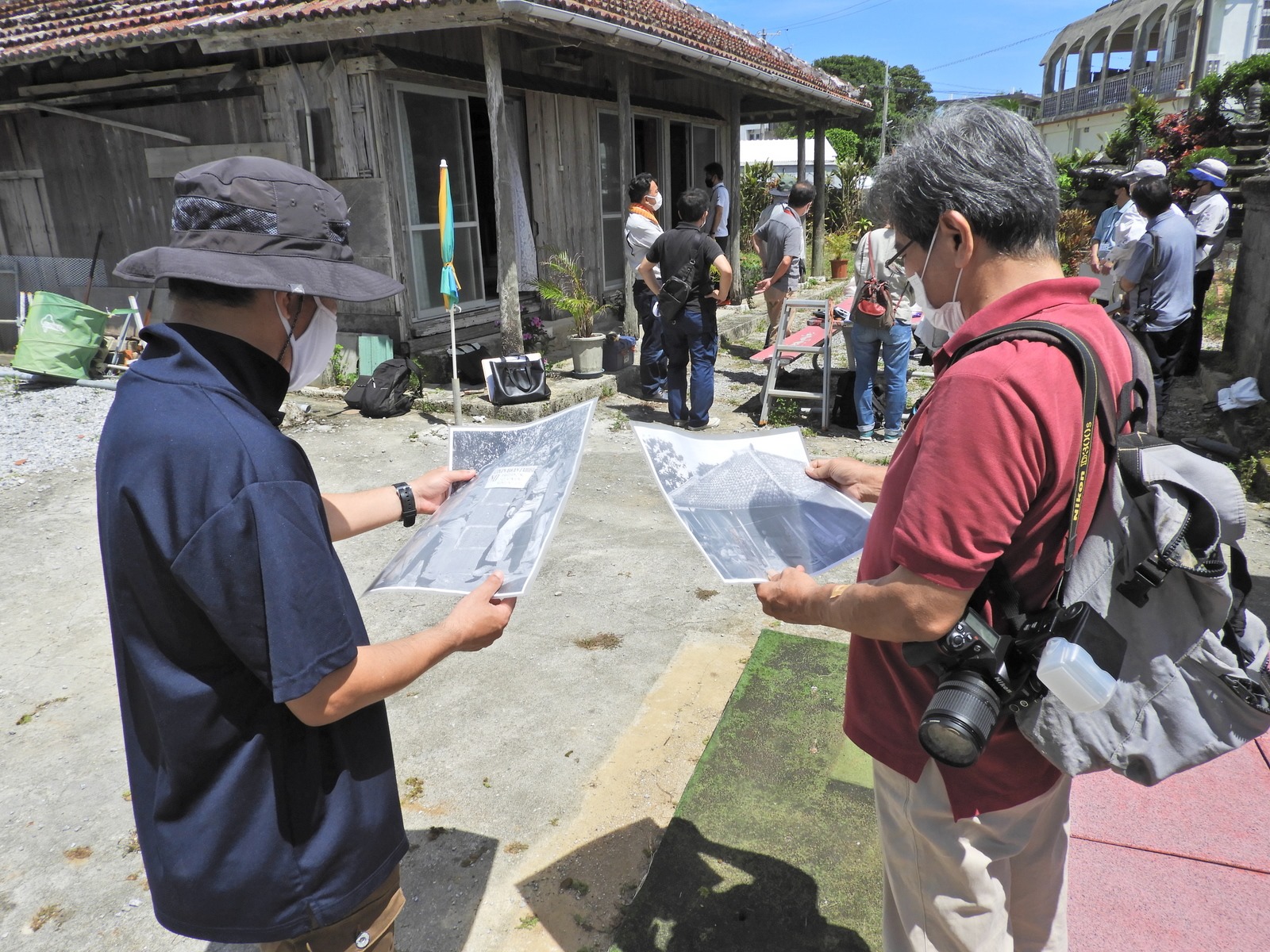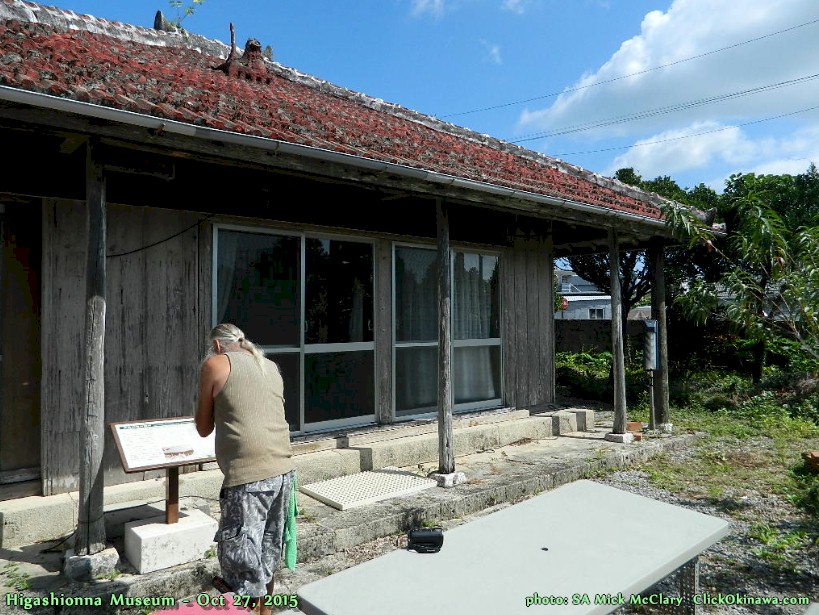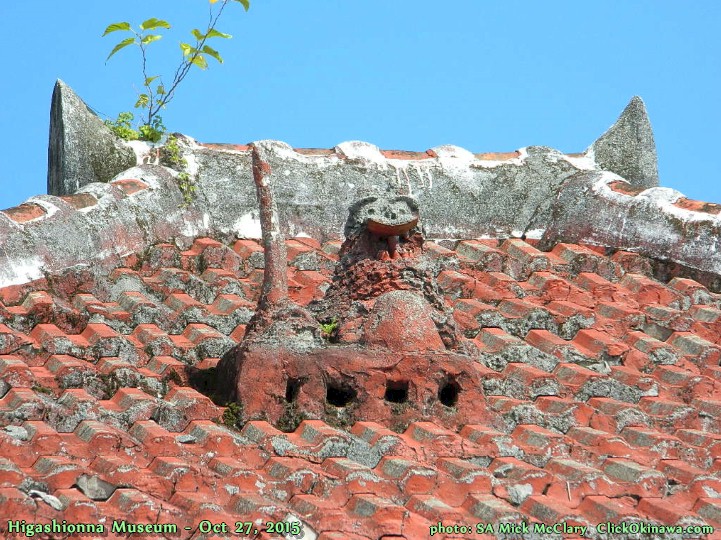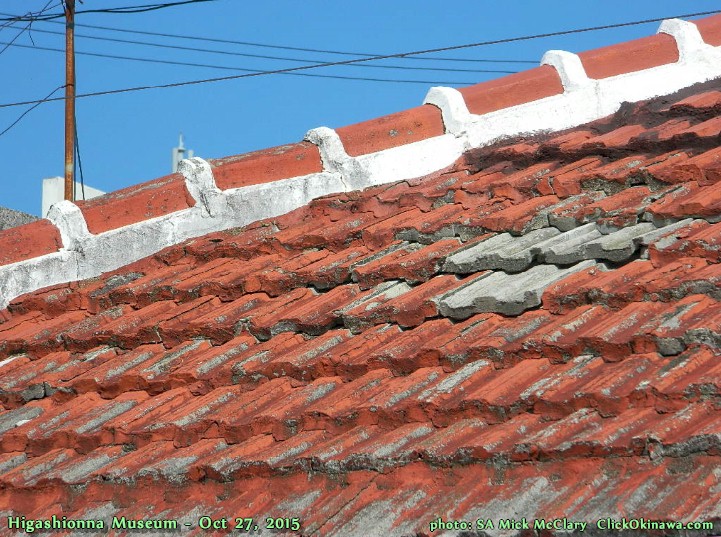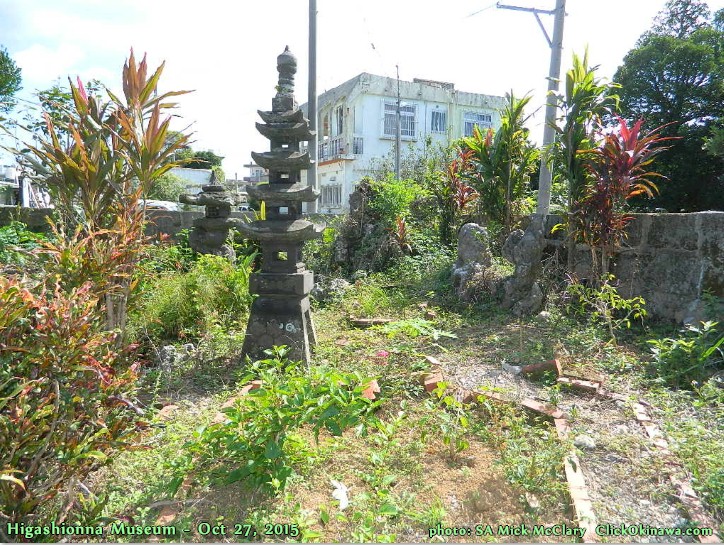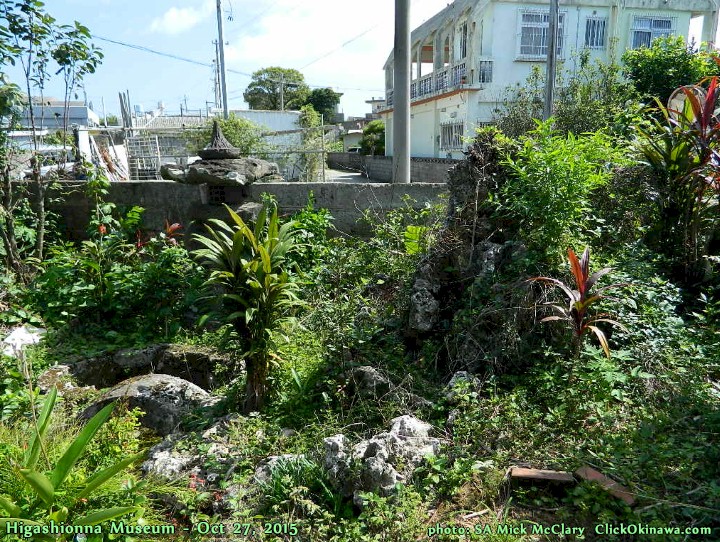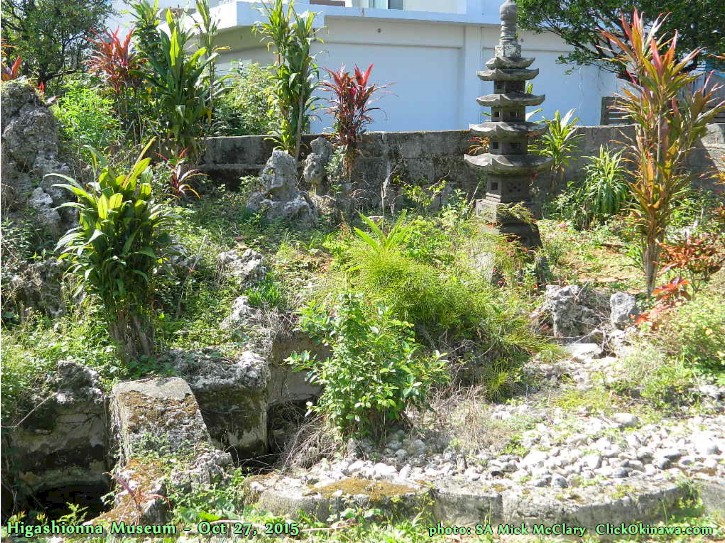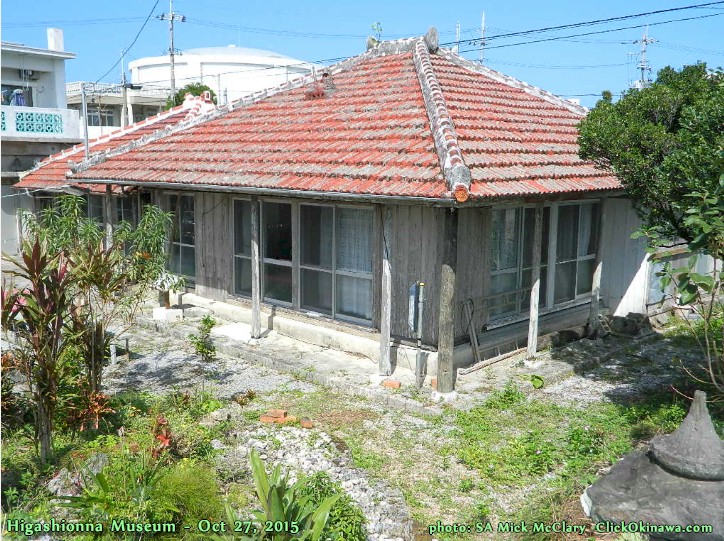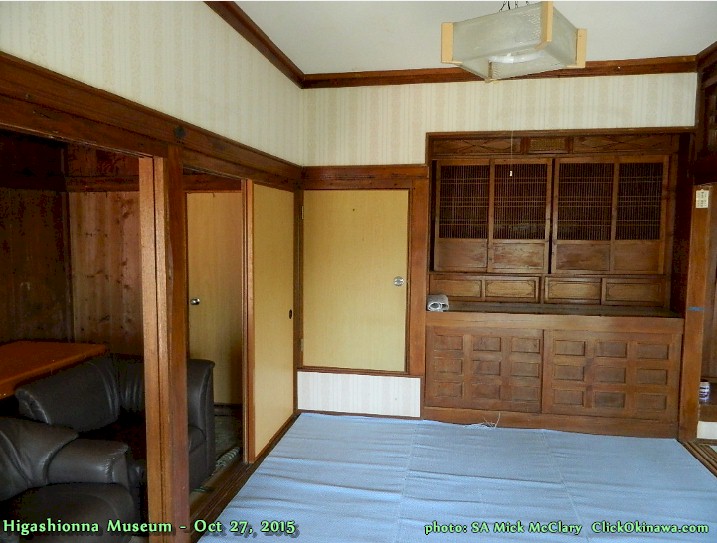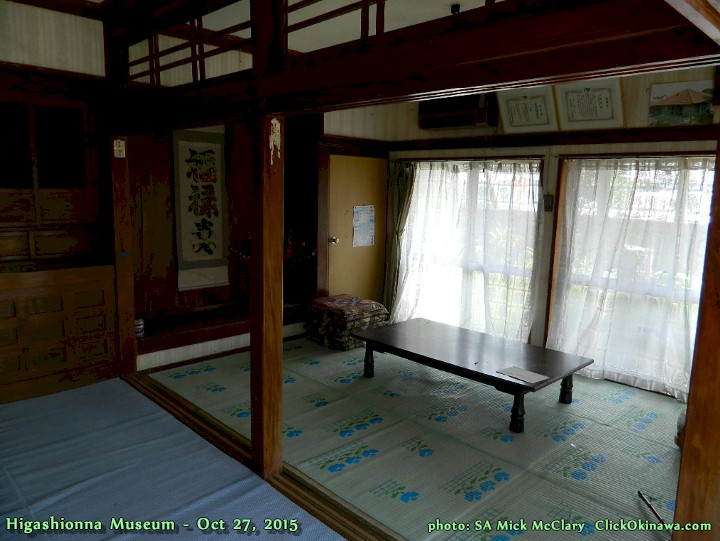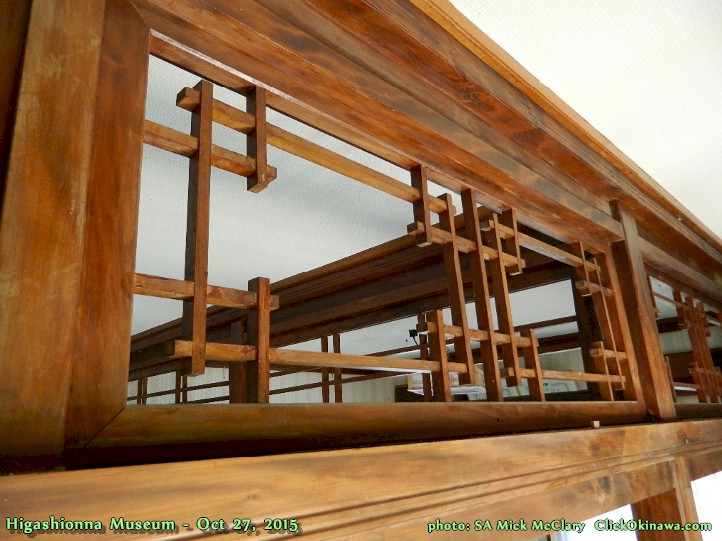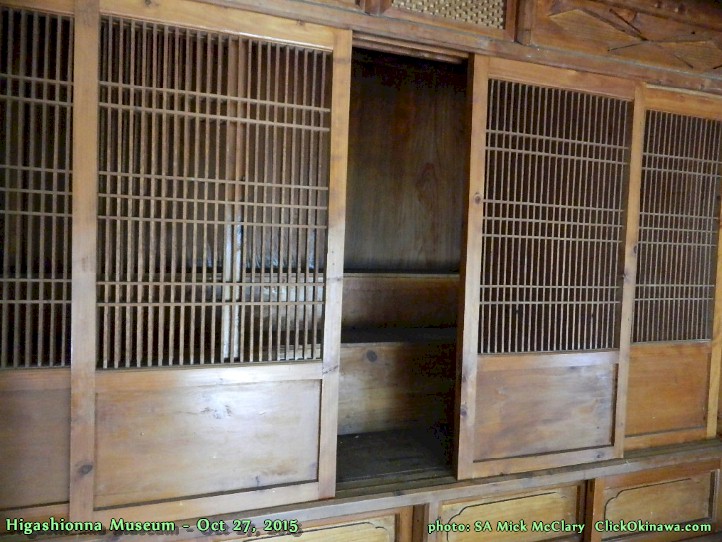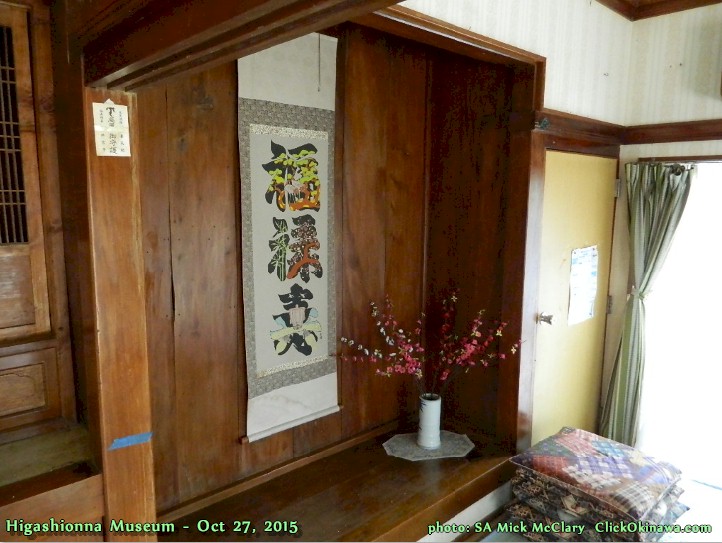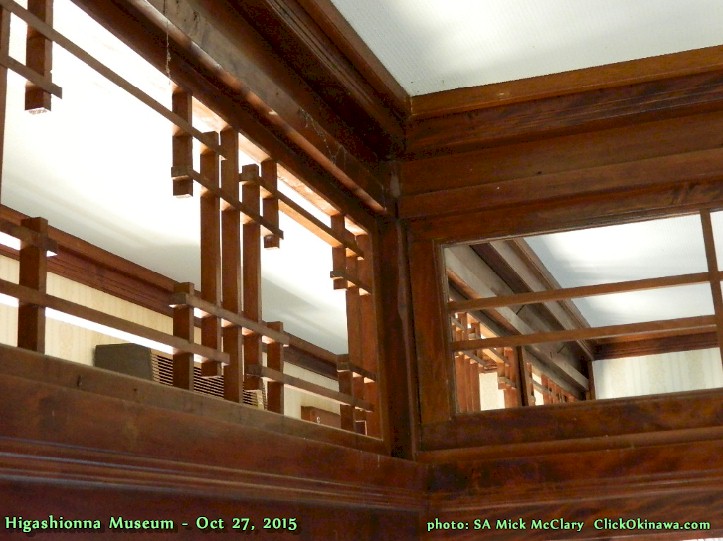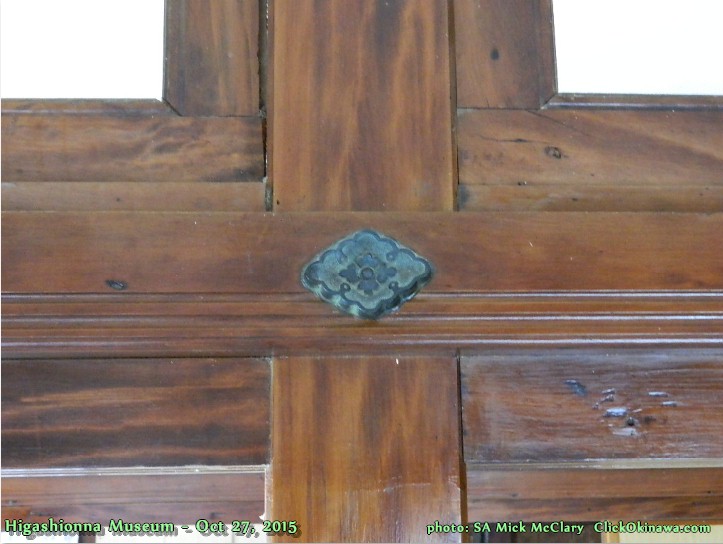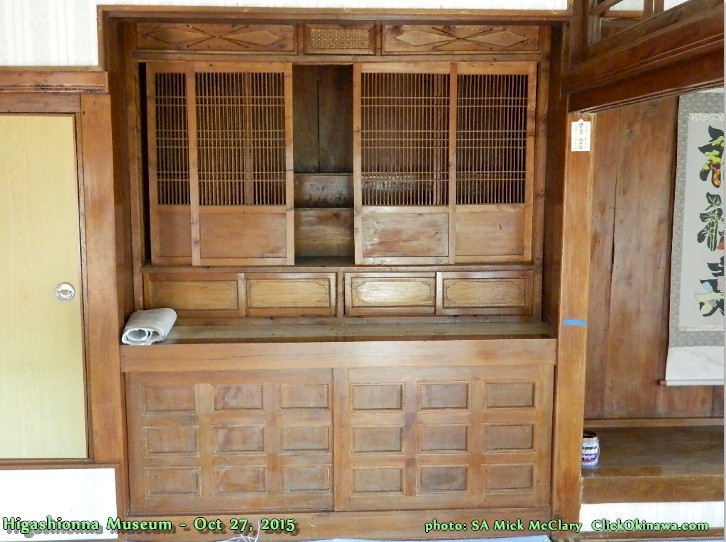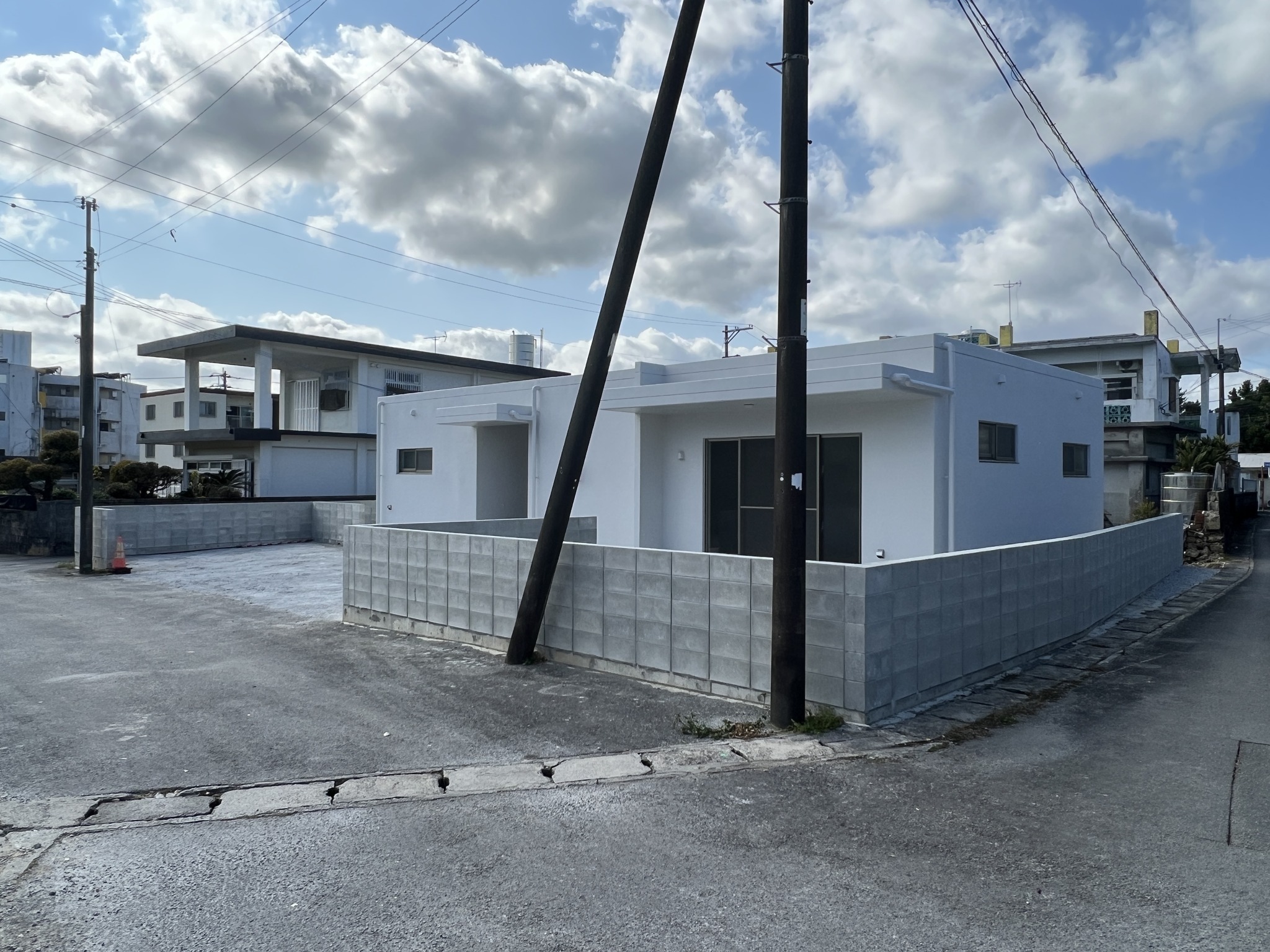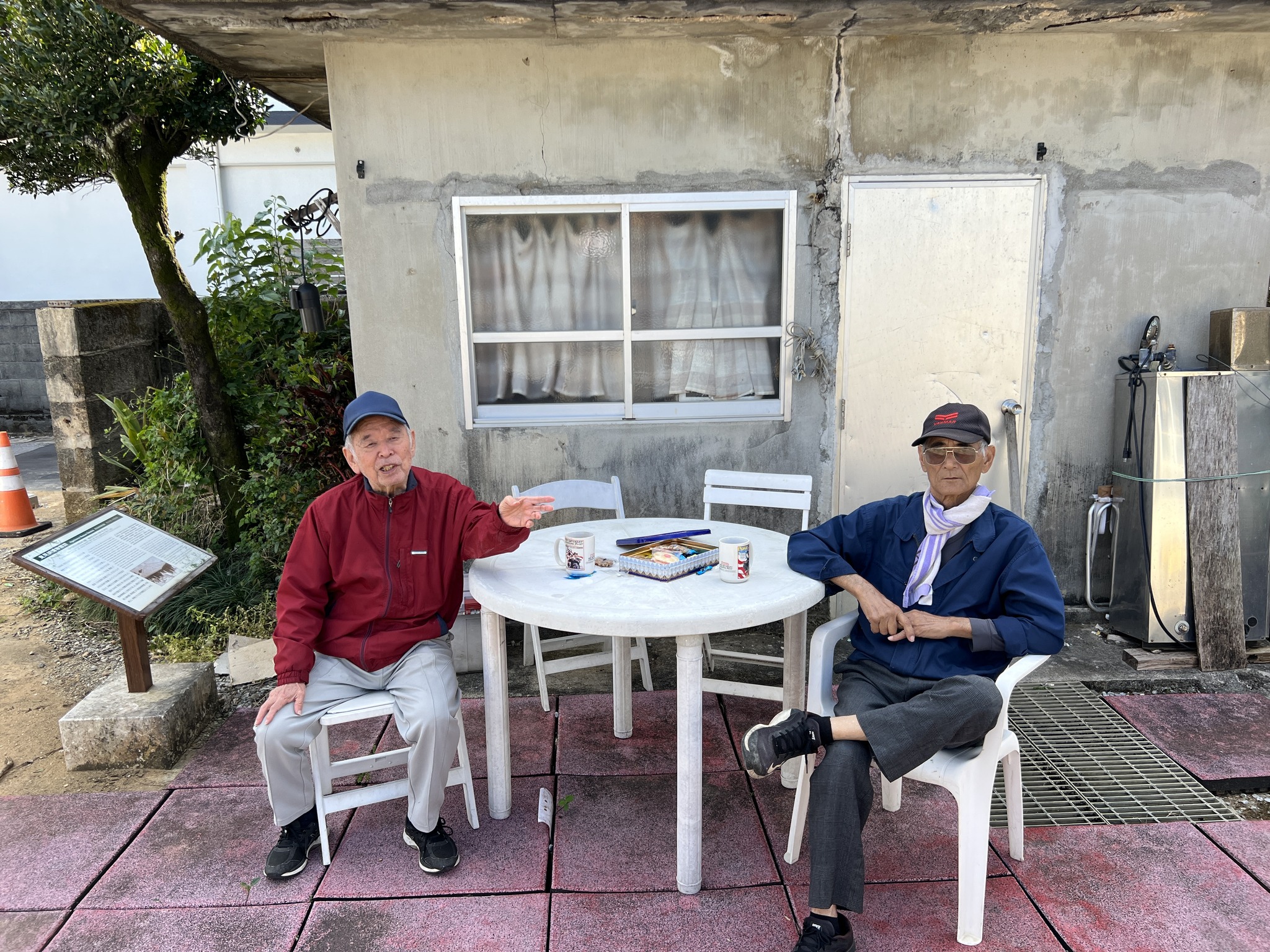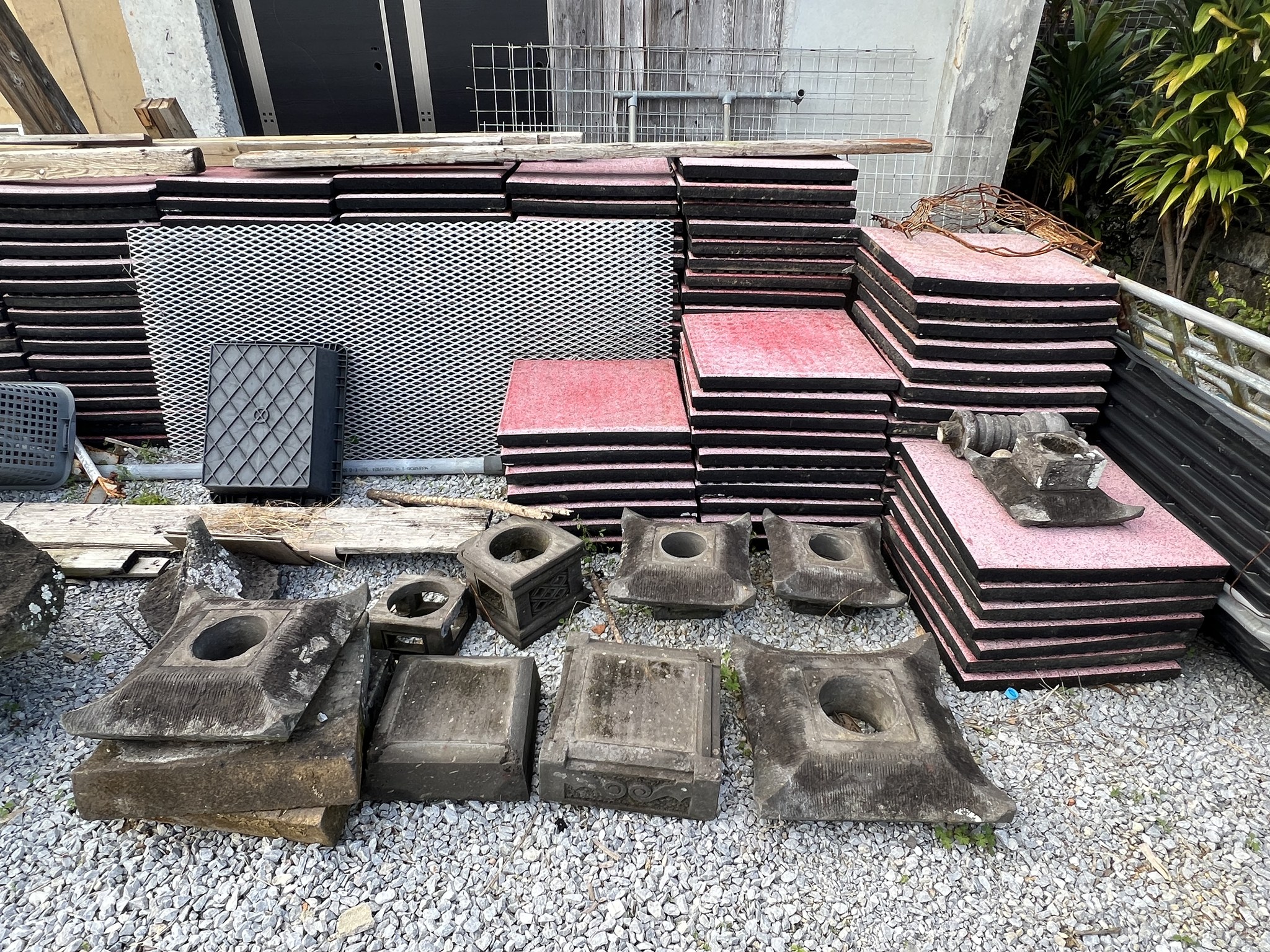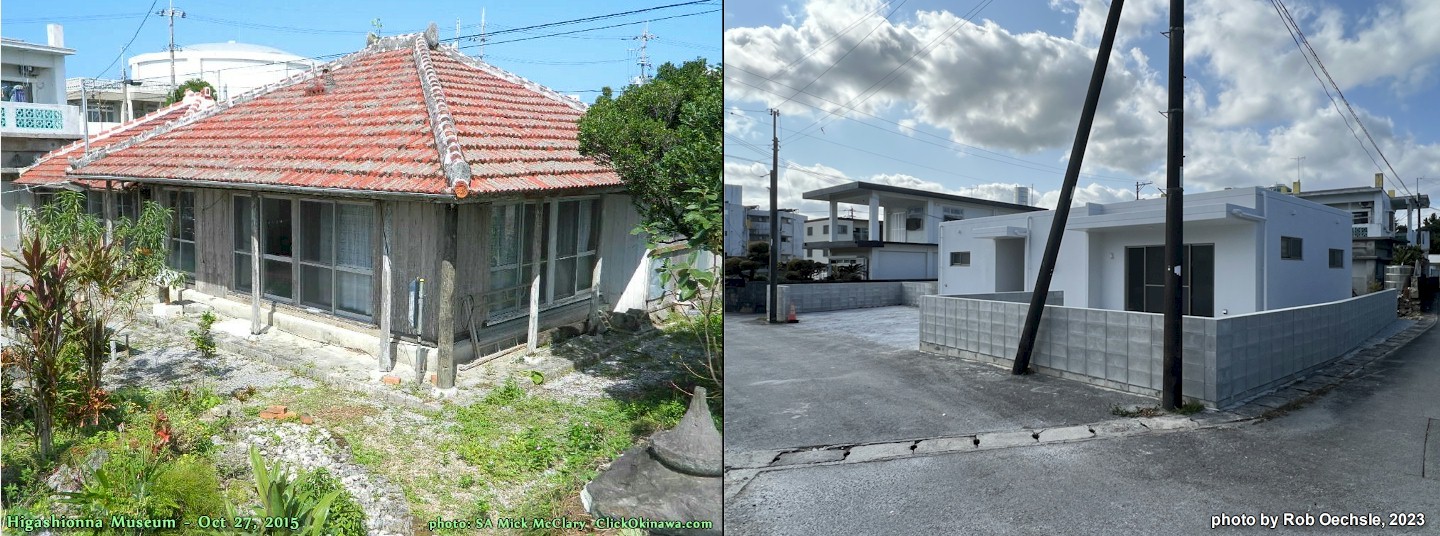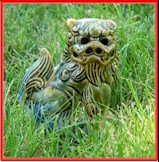    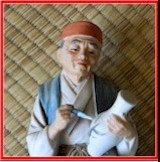            
|

...and a photo that Rob took a while back while the secondary house was still in existence.
On May 15, 2021, Rob Oechsle and a team of archaeologists, historians, and preservationists converged on the old museum building. Rob was on hand to witness their work and to obtain dozens of photos. The land-owner, Taira-san, will be razing the structure in coming weeks to make way for construction of a new home for his children and grand-children. Many of the old museumís treasured items, and in particular a beautiful butsudan will be removed and preserved prior to demolition.
Uruma City appointed cultural asset #36 "historic site" - Date of Appointment: March 1, 2005
On August 30, 1945, soon after the climax of the Battle of Okinawa, U. S. Navy Government Lieutenant Commander Willard Hanna opened Okinawa's first post-war museum, Okinawa Exhibition Hall in a small corner of military soil in Higashionna. Lieutenant Commander Hanna used a private home that had managed to avoid being damaged during the war to build his museum. He eventually expanded the building, constructed a Japanese-style garden, and even made pamphlets himself in hopes of helping stationed-and-future-American soldiers appreciate Okinawan culture.He poured his heart and soul into the revival of Okinawan Culture. On April 24th of the following year Okinawa Exhibition Hall was renamed Higashionna Museum soon after governing power shifted over to the people of Okinawa. Higashionna Museum is the forerunner to the Okinawa Prefectural Museum and Art Museum; thus the official opening date of the latter is the date the former was transferred. Lt Commander Hanna hired Okinawans to house the artifacts rescued from the rubble of Shuri Castle. He hired Omine Kaoru to be the museum's first director. Hanna believed that the entire museum operation needed to be run by Okinawans, not Americans. Omine, who later gained greater recognition as president of Daito Sugar Company, Hanna, and a handful of other Okinawans wasted little time in scouring the island for surviving artifacts.
So, after introductions and some attempts to explain my interest in the museum to Taira-san,
See the Higaonna Museum Restoration Project on Facebook. As things turned out there was no restoration and the place has been bull-dozed into oblivion. I'm sad about that. I began the "restoration project" with hopes of bringing it back to life but it never got anywhere. It turned out, I learned after speaking with the property owner and others, that Taira-san had no desire to renovate the property and in fact planned to tear it all down and build a new house for his kids. 2023 Rob Oechsle went back to the site of the old Higashionna Museum for some follow-up photos after he had returned from an extended stay back home in the U.S.. What he found was startling. Here are his words: When I went to the USA last June, there was nothing on the empty lot where the recently razed Museum once stood. When I returned to Okinawa near the end of last year [2022], a new house had appeared. Further, the beautiful 100-year-old hand cut awa ishi coral walls were gone, the himpun wall at the gate, and the entire sunken pool and hand-cut coral bridge that once crossed it. Only an old and dismantled stone lantern remained, to be resurrected in a side yard at a later date. Quite a let-down, and very disheartening. So, WHY did they remove the old coral walls around the property ? And WHERE did everything go ? According to 80-year-old Mr. Taira (grandson of the home owner when Lt. Hanna converted the property in the Museum) this is where things now stand.....
(1) With the application to build a new house on the Property, Uruma city required that the old coral walls be removed in order to widen the narrow roads along the front and back property lines. This needed to be done to widen the roads to 4 meters, bringing it in line with national laws that require 4-meters for FIRE TRUCKS and EMERGENCY VEHICLES. (2) The gnarly Chaagi tree trunks that once held up the roof along the front of the house are now over at the Katsuren Castle site, for use by them in a way I have yet to see. (3) The massive coral-block walls were carefully disassembled after 100 years, and given to the Prefectural Art University beside larger grounds of Shuri Castle. I do not know of they will be reassembled in all or part to enclose a new area there, or used for sculptures, or anything else. (4) The large hand-cut sunken pond (built stylistically in the shape of the kanji for 'heart") was carefully dug up and removed, and is in the possession of the Prefecture to be resurrected in a spot as yet unknown to me. Basically, all materials / carvings / creations that were original to the Museum, or that Lt. Hanna had commissioned, did NOT go to a land fill, and will live on elsewhere. At the moment, that's all I have to report. NOTE : Photos from today taken with an iPhone. No cropping or post-processing to make them look brighter or nicer. In a couple of the photos, you will see Mr. Taira (age 80) and his classmate friend, shooting the breeze. Finally, the new house is NOT lived in yet. They are taking their time to do the interior, and Taira-san's son and grandkids will move in when it's all done. Cheers.
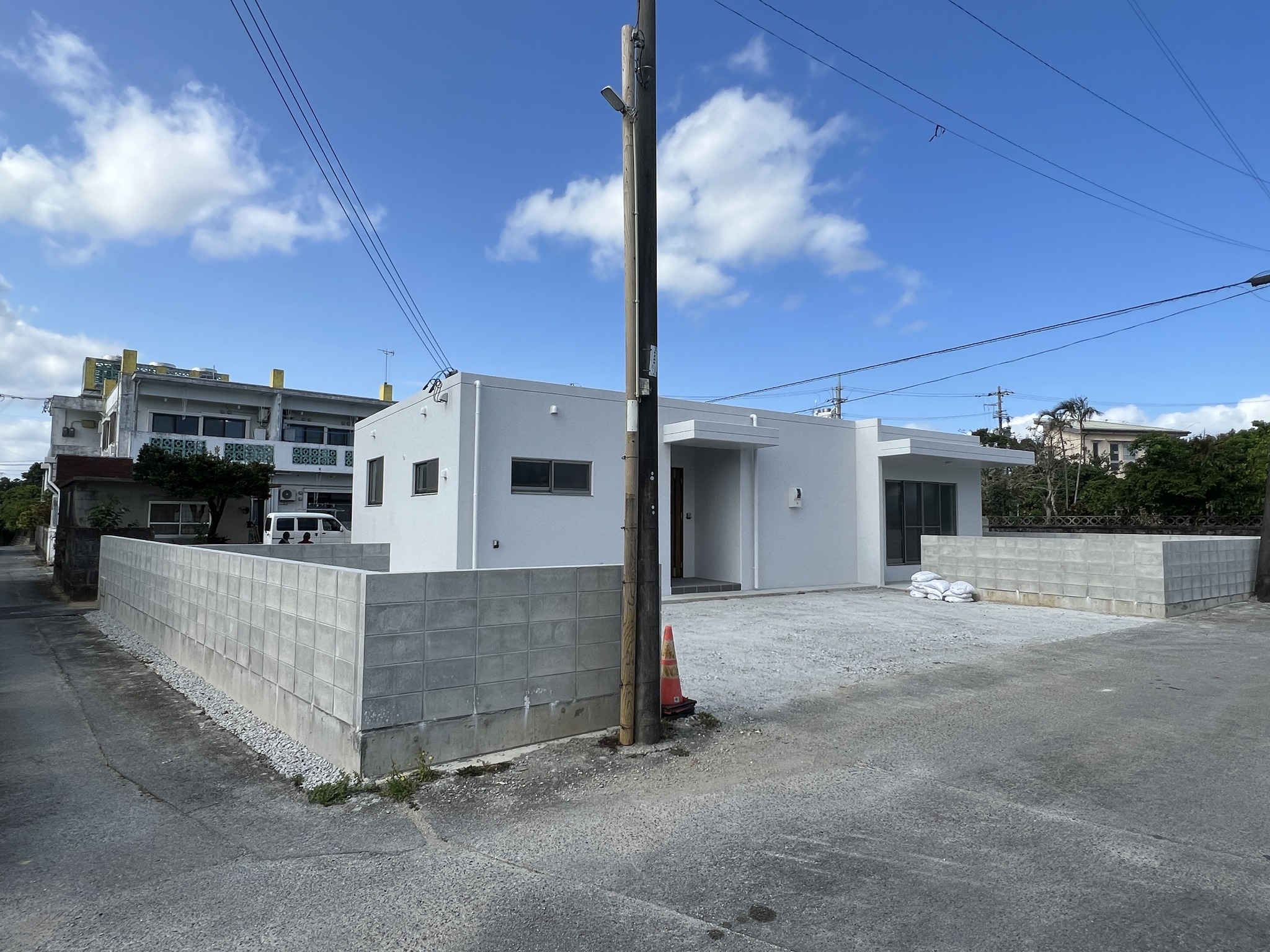
Other Resources:
The Old Higashionna Village Museum
The Weekly Okinawan article 23 Jan 1946
Exterior of the Higaonna Museum
Small shrine inside Higaonna Museum
Ornate table inside the museum
1996-2023 ClickOkinawa.com Updated: Mar 3, 2023
|
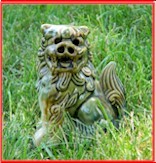  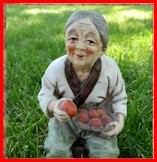  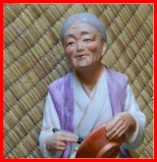            
|
